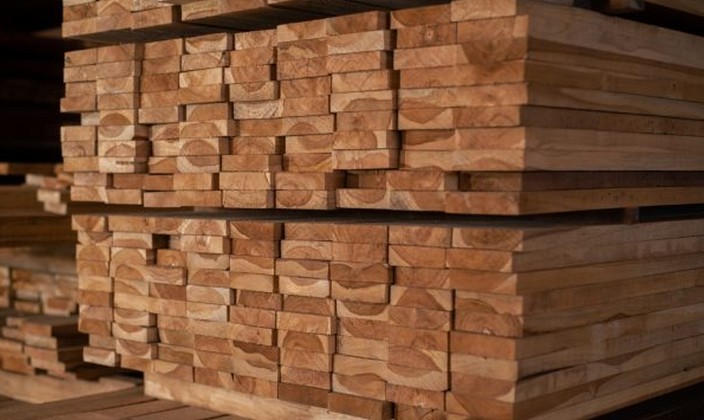CO2 and Wood: Sweden's Successful Model for Environmental Care and the Economy
2024 was the hottest year on record, with a global average surface temperature 1.55°C above pre-industrial levels, according to data from the World Meteorological Organization (WMO). Additionally, the last ten years have all ranked among the ten hottest, marking an extraordinary streak of record-breaking temperatures and making it the warmest decade since records began. Without a doubt, global warming is a harsh reality.
One of the main causes of this warming is greenhouse gases, with CO2 being the primary culprit, resulting from the burning of fossil fuels. Specifically, oil and coal were buried for thousands of years and are not part of the natural carbon cycle. Instead, they add extra CO2, causing rapid changes in the atmosphere, ocean, cryosphere, and biosphere. For this reason, there is a global agenda to reduce CO2 emissions through an energy transition, as well as a production and consumption transition, to cut GHG emissions and achieve carbon neutrality by 2050.
The Case of Sweden
This Nordic country is truly a model to follow, as it seems to have found the recipe for protecting the climate without sacrificing economic growth.
How? Primarily, they rely on wood as a fundamental industry for their economy, with over 70% of their land covered by forested areas. In fact, the globally renowned 'Stockholm Wood City' project is set to begin construction this year, planning to become the world's largest wooden city. This city will span an impressive 250,000 square meters, housing 7,000 offices and 2,000 homes, along with various shops, venues, and restaurants. This "wooden city" is a clear example of a global trend choosing wood as the primary construction material, as an alternative to concrete and steel. Moreover, in Sweden, 16% of new buildings use wood—a figure that has doubled in the last decade.
Today, there are approximately over 139 mass timber buildings worldwide—eight stories or taller—either completed, under construction, or proposed, according to data from the Council on Tall Buildings and Urban Habitat (CTBUH). The vast majority of these projects are in Europe and North America. In Latin America, the race has also begun, with ongoing projects in Chile, Uruguay, Brazil, Peru, and Mexico. In Argentina—despite significant progress in the last decade—standardized nomenclature, public policies, debunking deep-rooted myths about wood, its use and origin, training, and other areas are still lacking.
The country has reduced its net emissions by 80% since 1990 while its economy has grown robustly. As early as 1990, Sweden emitted five times less CO2 per capita than the European average. But what’s surprising is that Sweden is also a highly industrialized country producing steel, cement, and automobiles. Thus, achieving this milestone without sacrificing economic growth is a true triumph.
Furthermore, the country boasts a list of startups valued at over $1 billion. With a population of approximately 10.1 million people and a GDP per capita estimated at $50,339, Sweden has a thriving tech industry that has produced several billion-dollar startups. In fact, its tech sector is twice as productive as the European Union average. Half of the country's GDP comes from exports, and the tech sector accounted for 11% of total exports in 2022. Equally notable is its investment in education, which amounts to 7.6% of its GDP.
National Potential
Cities are both the cause and the solution in the fight against climate change. Responsible for 70% of carbon emissions, urban areas now house 55% of the global population—over 4.2 billion inhabitants. This trend will continue to rise: by 2050, it is estimated that 7 out of 10 people—out of 9.7 billion worldwide—will live in cities. Metropolises will absorb nearly all future global population growth. This goes hand in hand with new needs for inhabiting these cities. How to ensure environmentally friendly practices, how to choose less harmful materials, how to change habits, learn to reduce carbon footprints, and cultivate new forms of social connection. The answer is simple: with wood.
The use of wood from sustainable forest management makes a significant contribution to the energy, production, and consumption transition by allowing the replacement of non-renewable and energy-intensive products with a renewable, low-GHG-emission alternative. "Wood not only stores CO2 in its solid uses (construction, furniture, flooring, etc.) but also offers alternatives to replace fossil-based products (fuels, plastics, chemicals) and high-energy-consumption materials (cement, minerals) that are non-renewable, enabling a decarbonization strategy for supply chains. These characteristics not only help mitigate climate change across the entire production chain but also promote a circular bioeconomy, leading to more sustainable and inclusive options, given the high employment generation it fosters, contributing to economic growth and development," explain sources from Faima.
Using wood as a substitute for non-renewable and energy-intensive products is a significant contribution to promoting supply chains that reduce carbon footprints and help achieve the carbon neutrality needed to prevent a climate tragedy. At the same time, it supports a circular bioeconomy that aligns with sustainable development goals. This requires public policies to improve information and incentives for preserving forests, planting trees, and deepening the use of wood as a substitute for products with greater climate and environmental impact. It also demands the commitment of businesses and individuals to join this necessary climate action.
"Wood will play a leading role in the challenge of transforming major cities into more sustainable places through the bioeconomy. In fact, cities that use wood in construction become carbon capture and storage infrastructures. Even strategically placed parks and trees around buildings reduce energy consumption for heating and cooling. That’s why wood, trees, and forests are the backbone of climate-smart cities," they conclude.
Source:interempresas.net

















